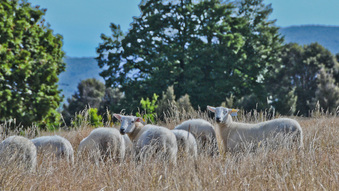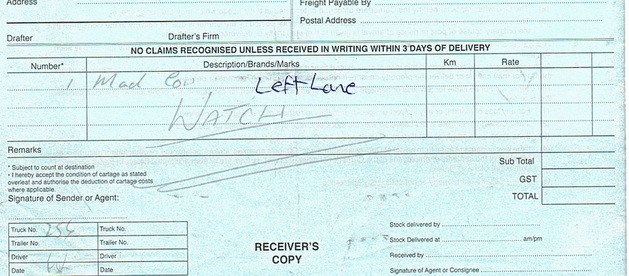chronicles
|
“I’ve got a 100% mad cow for you guys,” said the guy from the Southland transport company. “She should be in Blenheim tomorrow morning.” “Do you have deer fencing? You’re going to need it for this one,” said his colleague. “Your very friendly cow should be arriving around 7:30pm,” said the guy from the Nelson transport company. “I wouldn’t get in a paddock with her,” said his driver. “I’m just glad she’s off my truck.” Mad, murderous and Scottish... it seemed only natural to name our replacement Highland cow, Lady Macbeth. She arrived on Thursday evening last week. On Friday, she was quiet and seemed a little dazed. On Saturday, Farmer Wan noticed her staggering, seemingly unable to hold her own weight. We rang the vet in Richmond. He said she had either ryegrass staggers (unlikely, because all our other animals were fine) or a condition that’s uncommon in New Zealand, known as transport tetany. The symptoms are the same as those for staggers but the cause is different: stress from long-distance travel, along with a lack of regular food and water.
Farmer Wan made the two-hour round trip into town to collect a bag of medication. Although Lady M was obviously ill, we still couldn’t risk getting near her. We had to wait. On the Sunday morning we found her lying on her side. We spent 11 hours in the paddock with her, trying to keep her alive. We gave her the medication, poured almost 50 litres of water down her throat and, with the help of one of our neighbours, propped her up into a more natural position. She struggled hard to get to her feet but her back legs kept buckling. In the end, Farmer Wan built a frame around her to prevent her falling back on her side. There was nothing left to do but hope she’d make it through the night. She didn’t. That learning curve just kept getting steeper. We now knew how to give our cow subcutaneous injections (cowhide is as tough as, well... leather) and how to make her open her mouth (hook fingers in the nostrils, pull up and back) but we had no idea how to dispose of her carcass. We couldn’t leave it where it was – in the middle of a paddock fronting the road. We don’t own a tractor or a digger and even if we did, our ground is too rocky to dig a substantial enough pit. The vet suggested hooking her up to the 4WD, towing her somewhere less conspicuous and letting nature take its course. That’s what we did. We bought some agricultural lime to spread over the carcass to hasten decomposition and we’ll cover the remains with branches. Vale, Lady Macbeth. It felt disrespectful to dispose of such a magnificent beast in this way but there wasn’t much else we could do. The meat was no good and we didn’t have the knowledge and resources to remove the hide. Farmer Wan took off the spectacular horns and we’ll use them in future when we convert our conventional orchard to biodynamic. It still seems such a waste, though -- so much energy expended down the long chain of human involvement in that animal’s life. The feed, the transport, the veterinary care... thousands of hours, huge amounts of fossil fuel, just to end as a rotting carcass in a gully. We had a vague, theoretical understanding of what's involved in producing our food before, but now we actually get it. And that’s the biggest lesson we learned from Lady M. Posted by Farmer Nik
6 Comments
 We're discussing fractals. Go away. Whoever it was, I’d like to take issue with them because our particular, personal ovines are not dumb as stumps, like they're meant to be. They’re smart -- not quite as smart as our dog but streets ahead of our cat (who, admittedly, isn’t that bright and still has to be shown where her food bowl is). Clever sheep. Just our luck. The full extent of their intellectual prowess was only made clear to us recently when we attempted to separate Spiderbuilder the ram** from his girls. This segregation was designed to spare us the thrills of lambing during July blizzards. The problem was, we don’t have any stockyards. Or working dogs. Or experience. The theory was simple: we’d quietly herd them to a fenceline, walk them around it until we got to the gate and then direct them into a pen fashioned from temporary electric fencing. At this point, the theory got a bit hazy but basically involved Farmer Wan rugby-tackling dear Spiderbuilder to the ground, letting the ewes escape and somehow dragging the ram into the adjoining paddock. The first attempt started well. Aided by our friend Jan, we managed to get the sheep into the temporary pen. Then they panicked and jumped the fence, with the exception of one ewe who managed to get her head stuck through the mesh. We decided to change the set-up: different gate, more secure pen. Three more times, we had those animals penned up. Three more times they escaped. They’re good jumpers, our sheep. They have many talents. They're quite possibly Renaissance Sheep. The weather turned foul and we postponed the exercise until the next day. Reinforcements came in the form of Jan’s husband, Robbie. The game plan was basically the same – no noise, no fuss, just silent and implacable steering along the fence-line to the gate. (Jan has since dubbed this technique “Tantric mustering”.) We should’ve succeeded this time but we hadn’t allowed for one vital factor: the sheep had learned from the day before and weren’t having a bar of it. They were happy to trot along the fence-line but at the first sign of the gate, they’d bolt. And bolt again. Seven times they bolted. Finally, with sheep and humans all stressed and panting, we gave up. The solution: a substantial investment in some portable yarding, due to arrive this coming week. Until then, we have to hope Spiderbuilder exercises some restraint -- doubtful. I can just picture him with his three favourite ewes in the collective afterglow, murmuring with the utmost disdain: “Who said humans were smart?” ** It's a long story. Don't worry about it. Posted by Farmer Nik Hamish the bull was lonely. He'd gotten to know us a bit, was happy to let us hand-feed him carrots, but he was a lone bovine in a big paddock and he needed company. Two weeks ago, it arrived. The story of how Hamish's new family finally got here is something of an epic in itself. Suffice it to say, it took four days to take the animals by road from their original home in Southland (bottom of the South Island) to Muntanui (near the top of the South Island) and one of the cows died in the process. I should stress that this wasn't the supplier's fault. There were three different transport companies involved and one of them messed up. It was 9:30pm and pitch black when the truck eventually rolled up our driveway. Farmer Wan directed the driver to the appropriate paddock and, because we don't yet have a loading ramp, the animals either leapt (sheep) or lurched (cows) out accordingly. We were now the proud owners of the following certified organic livestock:
We've named the cow Senga, the heifer calf Sonsie and the steer calf -- who's destined for the freezer -- Stew. They've settled in well. Unlike Hamish, the newbies aren't very interested in making friends with us. They seem immune to the seductive allure of carrots. And last week, we got the first inkling that the honeymoon could be over for young Hamish and he might be craving some extra-marital excitement. He spent an entire day at the fence, bawling forlornly at a solitary cow in the neighbour's paddock over the road. Posted by Farmer Nik
|
About Ewan and NikiFarmer WanScottish mechanical engineer with a deep and abiding passion for good food. Outstanding cook. Builder of lots of stuff. Cattle whisperer. Connoisseur of beer. A lover rather than a fighter. Farmer NikKiwi writer and broadcaster who hates cabbage, even though she knows it's good for her. Chook wrangler. Grower of food and flowers. Maker of fine preserves. Lover of dancing and wine. Definitely a fighter. Archives
November 2016
Categories
All
|



 RSS Feed
RSS Feed
